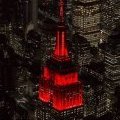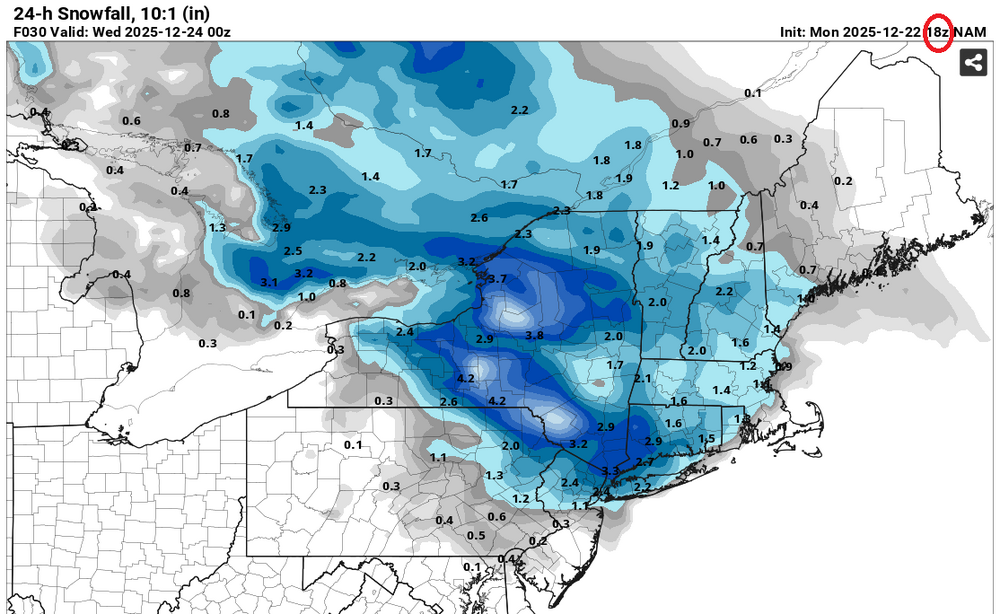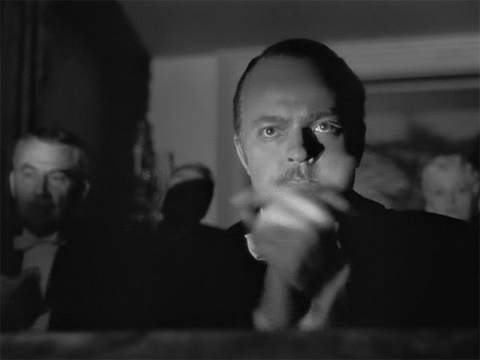-
Posts
22,987 -
Joined
About donsutherland1

Contact Methods
-
Website URL
http://wintercenter.homestead.com/photoindex.html
Profile Information
-
Four Letter Airport Code For Weather Obs (Such as KDCA)
KNYC
-
Gender
Male
-
Location:
New York
Recent Profile Visitors
The recent visitors block is disabled and is not being shown to other users.
-
Max temp profile did ok using Bufkit. But these are the maps being posted to make claims about the snowfall (past storm and the upcoming one). Thus, my critique covers those maps. As noted previously, virtually none of the individual EPS and GEFS ensemble members supported the idea that NYC would see < 1” snow from the upcoming system. In fact, the quality guidance has consistently favored a 3”-6”/4”-8” event for the NYC area.
-
This was the NAM just over 12 hours before the onset of Tuesday's precipitation for NYC: Outcome: Trace not 2.4".
-
Tomorrow will see increasing clouds. Snow will arrive during the late afternoon or evening and continue overnight. The snow could fall moderately to even heavily for a time. Sleet or freezing rain could mix in toward the end of the storm in parts of the region. A general 4"-8" snowfall is likely in and around the New York City area. Through 18z, a 4"-8" snowfall in and around New York City remains the baseline scenario. The NBM (19z: 8.0") and 76.8% of the EPS/GEFS ensemble members show 4.0" or more snow for New York City while 8.5% show 2" or less. The RRFS A, the NAM's successor, which had been a southern outlier yesterday has stabilized today with snowfall focused on the New York City area and Hudson Valley. Both the 18z RGEM and GFS also focused the snowfall in the consensus area. The 18z NAM is a northern outlier that is largely on its own. Almost always, the skillful models fare better than the NAM when the NAM is largely on its own. Areas to the south and west of New York City will see a larger share of precipitation fall as sleet and/or freezing rain. As a result from central New Jersey southward, snow accumulations will be noticeably lower. Philadelphia could pick up a coating to 2" of mainly sleet. The storm will be followed by a chilly weekend. A storm cutting to the Great Lakes could bring some rain and milder weather on Monday before cold air returns to close out December. The closing days of December will likely be colder than normal. December 2025 will very likely finish with a maximum monthly temperature below 60° in New York City. The last time that happened was in 2019 when the monthly high was 58°. If 2025 has a monthly high below 60°, that would be only the fifth such occurrence since 2000 (2003, 2004, 2005, and 2019 are the cases since 2000). The ENSO Region 1+2 anomaly was -0.6°C and the Region 3.4 anomaly was -0.8°C for the week centered around December 17. For the past six weeks, the ENSO Region 1+2 anomaly has averaged -0.40°C and the ENSO Region 3.4 anomaly has averaged -0.68°C. La Niña conditions will likely continue through at least mid-winter. The SOI was -2.96 today. The preliminary Arctic Oscillation (AO) was +0.775 today. Based on sensitivity analysis applied to the latest guidance, there is an implied near 100% probability that New York City will have a cooler than normal December (1991-2020 normal). December will likely finish with a mean temperature near 33.9° (5.2° below normal). That will make December 2025 the coldest December since 2010 when the monthly mean temperature was 32.8°. It would also make 2025 the third coldest December since 2000. Supplemental Information: The projected mean would be 3.5° below the 1981-2010 normal monthly value.
-
It has virtually no support by any of the 12z GEFS and EPS ensembles.
-
Through the early 12z guidance, my thinking that the New York City area remains in line for a 4"–8" snowfall has remained unchanged. The snow could still end as a period of sleet and/or freezing rain. The quality models such as the ECMWF, GFS, RGEM, along with the GEFS/EPS ensembles, provided reasonably consistent guidance overnight. The NAM, after flirting with the idea that NYC might see little to no snow in a bid to out-grinch the Grinch finally woke up, rubbed its digital eyes, and acknowledged the realities of the pattern and the evolving synoptic details. Its prior solution was disregarded, as virtually every EPS and GEFS ensemble member disagreed with its stingy snowfall total. Thus, the NAM had been offering an unrealistic scenario. After all, if what it was offering was realistic, at least some of the ensemble members would have provided support. For reference, New York City's last 6" or above snowfall occurred on January 28-29, 2022 when 8.3" fell from a blizzard that crushed parts of Long Island under more than two feet of snow.
-
-
Yes, but not this time.
-
It will turn somewhat milder as a storm cuts to the Great Lakes, but the warmth won’t break through like it did in 1984.
-
The 500 mb map preceding the storm has some similarities to December 27-28, 1984. Then, NYC picked up 4.8” of snow, Boston 0.2” and Philadelphia had none.
-
Thank you. Have a wonderful Holiday season, too.
-
I didn't. There were 406 if one considers two-day periods.
-
Yes. Central Park has seen 355 days with 4" or more snowfall. That amounts to an average of about 2.3 such days each year.
-
Given the strong support on the earlier individual ensembles, which span a plausible range of scenarios, I will need to see a lot more before buying into the NAM's latest solution. That a single member of the EPS had < 1" snow for NYC and none of the GEFS members had it, suggest that the idea is perhaps a very low probability scenario. It's difficult to see that 6 hours has brought about a dramatic and sharp change in the synoptic picture. Finally, the NAM was trying to dump 2.4" of snow on NYC with light precipitation, warming mid-level, and above freezing temperatures 12-18 hours before the onset of the last event. New York City received a trace. Let's see what the RGEM, GFS, UKMET, and ECMWF show over the next few hours.
-
-
It's unfortunate that this model will replace the NAM. As bad as the NAM can be, I can't argue that this model has any more skill.














